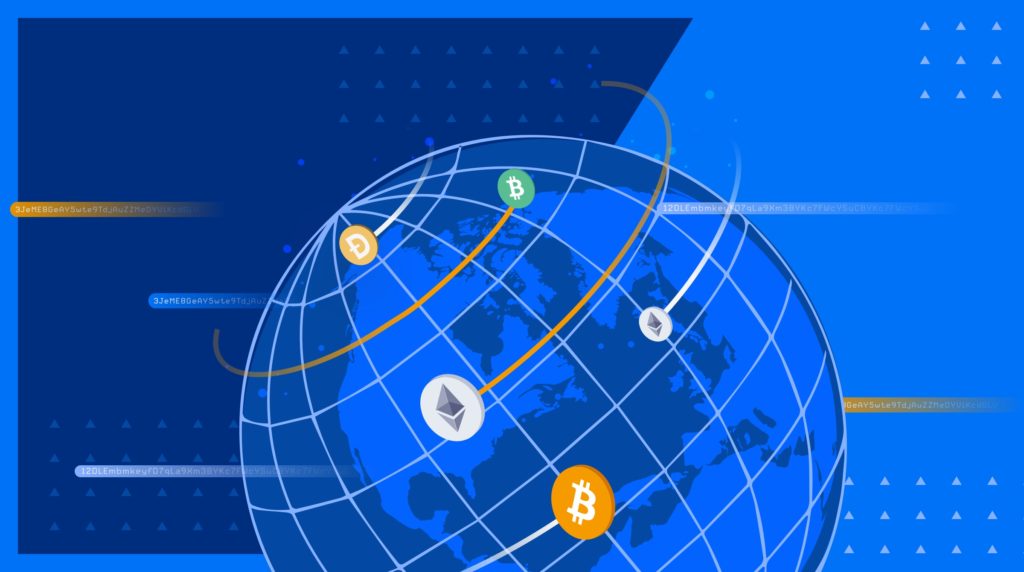If you’ve ever had to pay someone who lives overseas, you’re probably aware of the wide variety of problems that can come with international payments.
The traditional correspondent banking model results in high fees for both FX and transaction costs, along with settlement times that can range from 1-5 days. These inefficiencies can significantly impact end users which can be migrant workers sending money back home, small businesses paying international suppliers, and large corporates managing global liquidity.
Digital assets are an emerging currency class that have the potential to change the game for international payments. While there is some regulatory uncertainty surrounding how digital assets function in the global economy, the value of cross border crypto payments is undeniable.
So, can digital assets overcome their growing pains and disrupt international payments for good? We think so – and here’s why.
Digital assets enable real-time transfers
Digital assets can take many forms, including natively digital assets such as BTC and ETH or tokenized assets such as stablecoins and other traditional assets.
Tokenized currencies such as USDC and USDP allow you to reap the benefits of a traditional cash payment, like value stability, while leveraging the benefits of blockchain technology like real-time settlement, visibility, and transparency.
No matter what kind of asset you’re using, digital assets have the potential to disrupt the traditional model by enabling the real-time transfer of value. When utilizing digital assets to pay someone across the globe, transactions can be made directly between two parties, removing intermediaries and the issues traditionally associated with international payments.
Digital assets know no bounds
One of the main reasons why digital assets are ripe to disrupt international financial services is because of the utility they pose in the transfer of value cross border. Unlike traditional fiat currencies, digital assets know no bounds; that’s why cross border crypto payments could bring enormous benefits, where currently international payments tend to be slow and expensive.
In general, cross border payments are bogged down by legacy payment infrastructure, leading to delayed settlement times and high fees.
Currently, migrants often pay up to 10% per transaction and with money being sent home for families to pay for rent, groceries, and bills the ability to lower these fees and increase settlement times can have a significant impact. Another major market segment that can benefit from using digital assets for transfers across national borders is the unbanked, which represents a population of over 1.7 billion people.
In addition to remittances, B2B payments are also ripe for disruption by digital assets, particularly USD international wires.
As we explained in our recent blog post, Fireblocks is currently accepting stablecoin cross border payments from customers all around the globe due to their convenience.
Today, a customer can pay us in any stablecoin and we can use UniSwap to convert it to USDC – then we simply pay about $5 to send it to Coinbase or Circle, convert everything to fiat currency, and send it to a traditional bank account. This is in contrast to traditional international payments, which continue to create extra costs and headaches for our accounting team.
Our usage of stablecoins for cross border B2B payments from our customers is just one example of digital assets’ utility in the field of international payments.
How blockchain cross border payments reduce costs and improve speed
Blockchain technology has transformed crypto cross border payments, offering a faster and more affordable solution compared to traditional banking systems. Traditional international transfers involve high fees, slow processing times, and multiple intermediaries. With blockchain, however, blockchain cross border payments can bypass these hurdles, enabling direct peer-to-peer transactions at a fraction of the cost.
One of the primary benefits of blockchain cross border payments is the significant reduction in transaction fees. Traditional wire transfers often come with steep charges, especially when multiple banks are involved. Blockchain eliminates intermediaries, reducing fees and making cross border transfers more economical, particularly for frequent transactions.
Speed is another key advantage. Traditional payment systems can take several days to process cross border transfers, especially across different currencies. Blockchain, however, enables near-instant transactions, with settlement times typically in minutes rather than days. This speed is crucial for businesses that rely on quick payments to maintain cash flow.
When choosing the best crypto for cross border payments, options like Bitcoin and Ethereum are popular, but newer cryptocurrencies are gaining attention due to their lower transaction costs and faster speeds. These cryptos are often considered ideal for crypto cross border payments, offering both efficiency and cost-effectiveness.
Regulatory for cross border crypto payments clarity is coming
As noted earlier, one of the main issues for digital assets to enter the mainstream for cross border payments is regulations.
However, all signs point towards an incoming wave of regulatory clarity. Some regulatory bodies have started publishing guidelines, including the Financial Action Task Force and the Bank for International Settlements. Few regulatory measures have been introduced thus far, but it is only a matter of time until more substantial regulations arrive.
Stablecoin cross border payments are one way that digital asset that could disrupt international transfers.
Using Fireblocks, GMO Trust was able to launch an end-to-end tokenization solution for stablecoins in just 30 days. Through doing so, GMO Trust developed the first regulated stablecoin tied to the Japanese Yen, as well as a stablecoin tied to the US dollar. Both are prime candidates for international payments usage.
Read our new case study, How GMO Trust Launched a Regulated Stablecoin and is Enabling 3X Profitability with Fireblocks’ End-to-End Tokenization, for the whole story.



